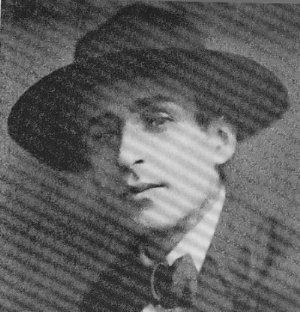Name John Cournos | Role Writer | |
 | ||
Books The Devil is an English G, The mask, The Little Demon ‑ Scholar's, A modern Plutarch, In Exile | ||
John Cournos Life & Works
John Cournos, born Ivan Grigorievich Korshun (Ivan Grigor'evich Korshun; he himself used the form Johann Gregorevich for his original name) (6 March 1881 – 27 August 1966), was a writer and translator of Russian-Jewish background who spent his later life in exile.
Contents
Cournos was born in Zhitomir, Russian Empire, and his first language was Yiddish; he studied Russian, German, and Hebrew with a tutor at home. His family emigrated to Philadelphia when he was ten years old, and his primary language became English. In June 1912, he moved to London, where he freelanced as an interviewer and critic for both UK and US publications and began his literary career as a poet and, later, novelist. He later emigrated to the USA, where he spent the rest of his life.
He was one of the Imagist poets, but is better known for his novels, short stories, essays and criticism, and as a translator of Russian literature. He used the pseudonym John Courtney. He also wrote for The Philadelphia Record under the pseudonym "Gorky."
Later in life he married Helen Kestner (1893–1960), who was also an author, under the pseudonym Sybil Norton. However, he is probably best known for his unhappy affair with Dorothy L. Sayers, fictionalized by Sayers in the detective book Strong Poison (1930) and by Cournos himself in The Devil Is an English Gentleman (1932).
Anti-communist writing
In the aftermath of the October Revolution Cournos was involved with a London-based anti-Communist organization named The Russian Liberation Committee. On its behalf he wrote in 1919 a propaganda pamphlet named London under the Bolsheviks: A Londoner's Dream on Returning from Petrograd, based largely on what he saw during his 1917-18 visit to Aleksey Remizov in Petrograd, whose Chasy he was then translating as The Clock. It closely follows the early events of the Bolshevik seizure of power in Russia, and was set in Britain to better enable the British audience to imagine what it was like. Sinclair Lewis used the same device to imagine a Fascist takeover in the United States in his 1935 work It Can't Happen Here.
In Cournos' lurid but humorous future history, a British revolutionary regime introduces a new currency named "The MacDonald" for Ramsay MacDonald; MacDonald is, however, soon shoved aside by the Bolshevik leaders MacLenin and Trotsman (sic). A counter-revolutionary drive by General Haig is defeated at St Albans, and the Bolsheviks start rounding up their former allies. Lloyd George is imprisoned in the Tower of London. H.G. Wells, too, is imprisoned by the Bolsheviks, despite his left-leaning book Love and Mr Lewisham. London is portrayed as plagued by poverty, with black market cigarettes and broken lifts, and the narrator wanders round the Strand exclaiming at the filth of the streets, the idlers and the jealous envy displayed towards his new boots.
Death
Cournos died on 27 August 1966 in New York City.
